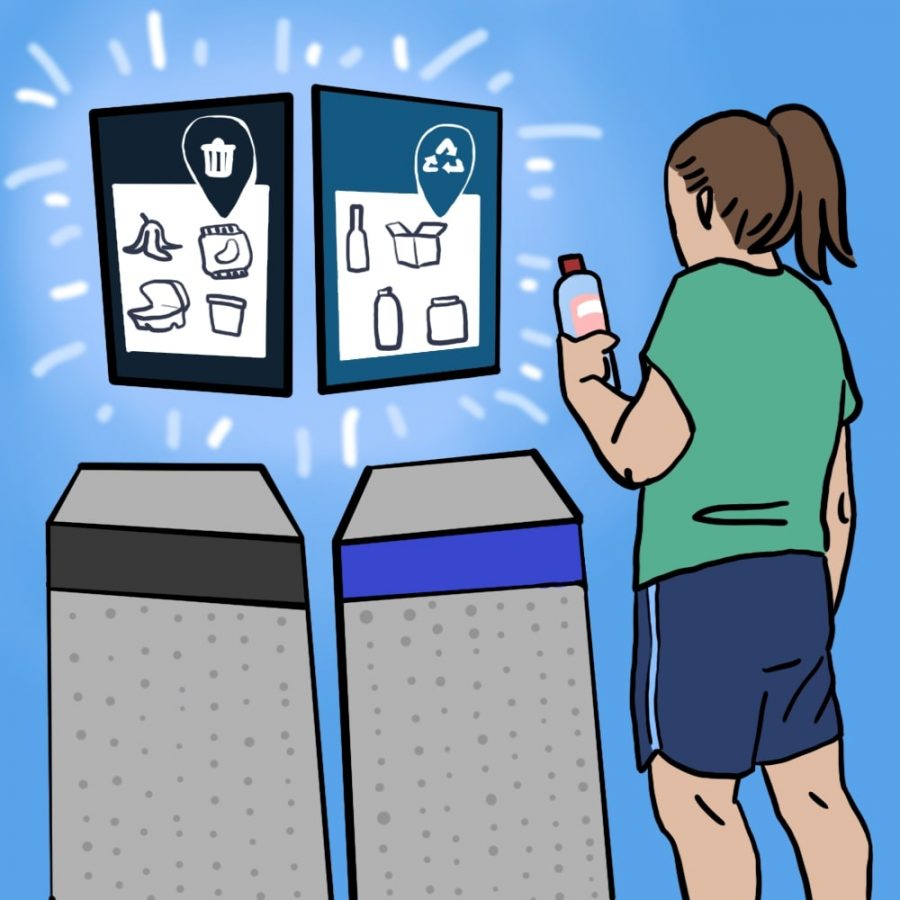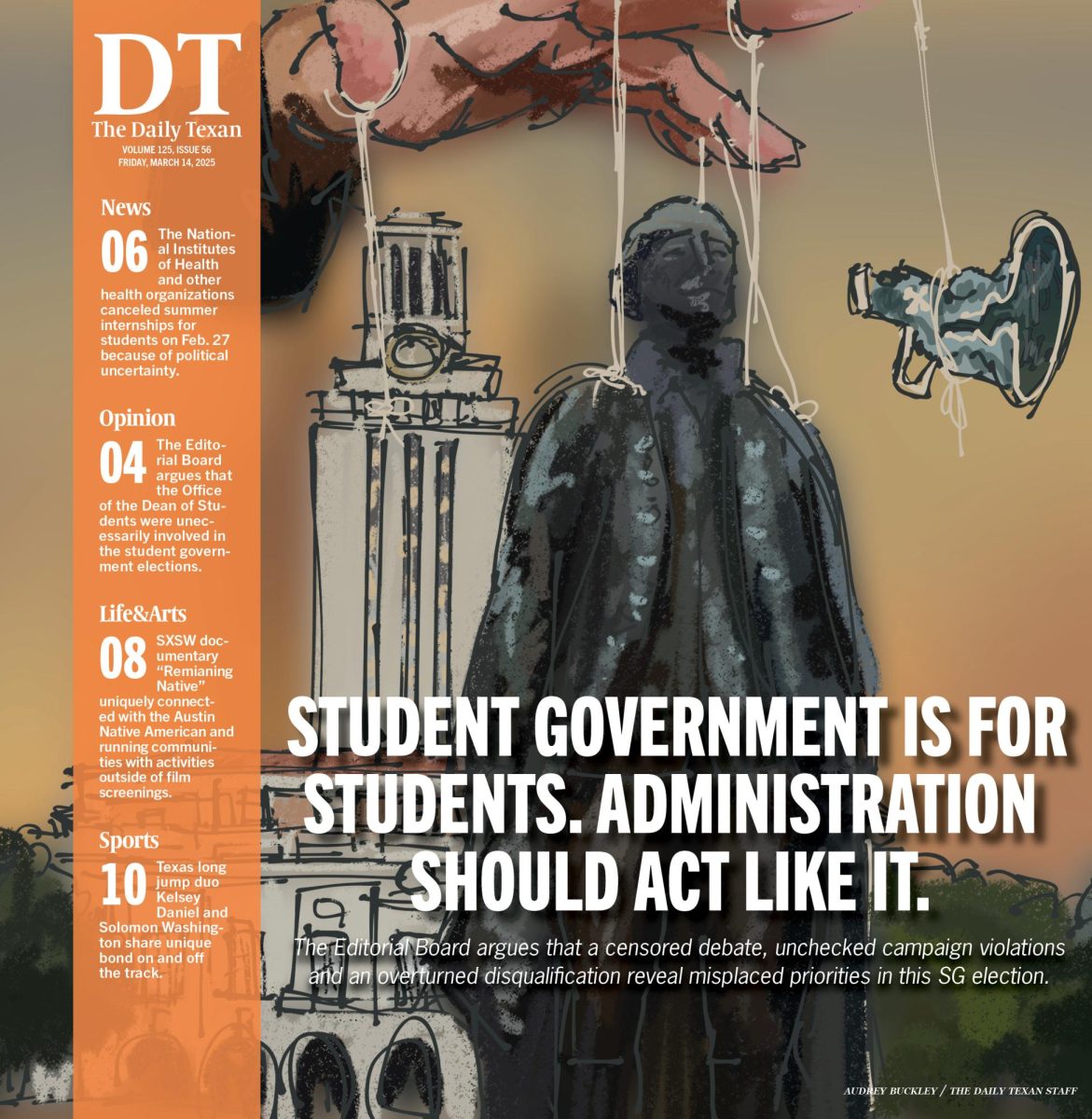UT working to standardize recycling on campus
July 19, 2021
Editor’s Note: This article first appeared as part of the July 12 flipbook.
UT is working to standardize recycling on campus by creating new signs and an online database as part of the University’s zero waste goal.
The University’s zero waste goal would mean only 10% of the waste produced on campus would go into landfills, with the rest being recycled, composted or reused in another way, said Melanie Albrecht, a former biology student involved in Resource Recovery. The goal was originally set for 2020, according to previous reporting from the Texan, but the University has not been able to achieve this goal. According to the Zero Waste Program website, during their last observation in the 2018-2019 fiscal year, UT’s waste diversion rate was 42%.
“We’re always learning as we go,” Albrecht said. “It’s an ongoing process.”
Albrecht said sorting waste is important to effectively reducing waste because if something is thrown in the wrong bin, it can contaminate other items and reduce the quality of recyclables.
To prevent contamination and reach the zero waste goal, students in Resource Recovery said they are updating waste bin signage across campus and created the, “What Do I Do With This?” sorting database. Students can search items on the database to determine where to put their waste.
Designing these new signs was an integral process on campus because many students have been taught to recycle differently in their hometowns, Albrecht said.
“Part of standardizing is trying to find something that applies well to everyone and signs are easy to understand when the image relates to the actual item,” Albrecht said.
Lindsey Hutchison, Zero Waste coordinator, said the organization created the online database to answer any questions about where an item should go.
“There is only so much information you can put on a sign,” Hutchison said. “There are lots of other materials students come across on campus, so we created this online database where people can look up any material they encounter.”
Computer science junior Angel Vega designed the online database, which will be accessible through a QR code on the signs.
“I came up with the items that people would be throwing away and researched where each waste item should be going,” Vega said.
Hutchison said the new signs will be hung in 134 academic buildings by the end of the summer.
“We couldn’t have done it without student support, input and actions,” Hutchison said.












